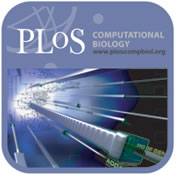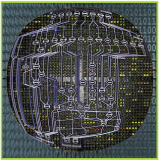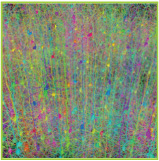
| PLoS Computational Biology Overview Since celebrating its fifth birthday last June PLoS Computational Biology has continued to nurture its community projects and accommodate ongoing growth in submissions. Each month, on average we now receive 120 new research articles and publish 32. Nearly half a million people visited the journal's website last year, an increase of over 30% from the previous 12 months. The steady growth we have seen in the journal's six years is a testament to the continuing high regard of and investment from the diverse groups we represent. While PLoS Computational Biology's primary objective remains to publish research of exceptional significance, we also relish our role as a community platform for discussion, advocacy and professional education. The past year has seen many exciting new developments in these areas: New for 2011 are Editors' Outlook articles, which aim to provide diverse commentary from our editors in the subjects they cover for the journal. We look forward to seeing the editors discuss the state of the art in their respective research areas, what they see as future developments, and what they are contributing to these areas themselves. The first article, on "Bridging the Resolution Gap in Structural Modeling of 3D Genome Organization" by Marc Marti-Renom & Leonid Mirny will be published around the time of this year's ISMB meeting. In the past year PLoS Computational Biology has also expanded its ongoing projects to document both the best of today's cutting-edge research and the field's rich history. Conference Postcards, which give a fresh summary of meeting highlights from young researchers, added articles from ISMB 2010 and PSB 2011, and we also hope to report on the best of this July's ISMB/ECCB. The Roots of Bioinformatics, a series of essays giving both historical and technical insights into the genesis of the field we know today, saw two new additions: "The Roots of Bioinformatics in Theoretical Biology" by Paulien Hogeweg and "The Roots of Bioinformatics in Protein Evolution" by Russell F. Doolittle. In addition, PLoS Computational Biology's new Software Section aims to provide a venue for outstanding open-source software that has already yielded important biological results. Article suggestions are coming in thick and fast, with the first articles set to appear later this year. Like all PLoS journals, PLoS Computational Biology is committed to ensuring that research can be freely accessed and reused, to the benefit of both authors and readers. As such, we were delighted to support the ISCB by publishing the society's pivotal Public Policy Statement on Open Access to Scientific and Technical Research Literature (www.ploscompbiol.org/doi/pcbi.1002014) in February 2011 (the Statement is located here). Of course, none of the above would be possible without the tireless support and generosity of the community we serve. PLoS Computational Biology would like to thank the reviewers, editors and authors who have made the journal what it is today. Examples of highly downloaded articles 2010-2011
|



